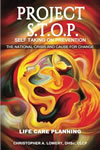All Articles
Anger Management & Related Issues
Human Factors
Animals
HVAC - Heating, Ventilation, Air Conditioning
Archaeology - Archeology
Hydrology
Boating
Investigation & Surveillance
Business Consulting
Law Enforcement
Chemical Industry
Life Expectancy - Life Care Planning
Child Welfare
Linguistics
Corrosion
Logistics - Reverse Logistics
Criminology
Marine - Maritime
Damages
Mediation
Design
Medical Malpractice
Digital Forensics
Metallurgy
Documentation Examination & Analysis
Mining
Economics
Neuropsychology
Elder Abuse
Obstetrics - Gynecology (OBGYN)
Elevators - Escalator - Automatic Doors
Pharmaceuticals
Enterprise Resource Planning (ERP)
Professional Malpractice
Exercise & Fitness
Psychology
Eyewitness Testimony
Radiology
Feng Shui
Recreation & Sports
Finance
Search Engine Optimization (SEO)
Food & Beverage
Speech-Language Pathology
Foreign Affairs - Geopolitics
Underwriting
Forensic Psychiatry
Warnings & Labels
Hazardous Materials
Yoga
More...

DOMESTIC-VIOLENCE-PAGE ARTICLES MAIN PAGE
. Contact Us if you are interested in having your work published on our website and linked to your Profile(s).
All Articles
Accident Prevention & Safety
Investigation & Surveillance
Animals
Legal Issues
Aquatics Safety
Life Expectancy - Life Care Planning
Architecture
Linguistics
Attorney Fees
Machinery
Banking
Marine - Maritime
Chemical Industry
Market Research
Computer Forensics
Marketing
Computers
Mediation
Construction
Medical - Medicine
Criminology
Medicine
Dram Shop Liability
Mining
Education & Schools
Nonprofit Organizations
Energy - Utilities
Nursing
Exercise & Fitness
Obstetrics - Gynecology (OBGYN)
Feng Shui
Oil & Gas
Finance
Politics
Fires & Explosions
Pools and Spas (Recreational)
Foot / Ankle Surgery
Professional Skills
Forensic Psychiatry
Radiology
Healthcare Facilities - Hospitals
Risk Management
HVAC - Heating, Ventilation, Air Conditioning
Sexual Abuse - Molestation - Harassment
Industrial Hygiene and Safety
Taxation
Insurance Coverage Analysis
Toxicology
Internet Marketing
Yoga
More...
Featured Articles
There are no active articles here at this time. Please use the search bar, try another category, or contact us if you would like to contribute an article.
This Article is unavailable. Contact Us
Search articles by title, description, author etc.
Sort Featured Articles
Featured resources
Communications Systems and Networks
by Ray Horak, Harry Newton, Mark A. Miller
Project S.T.O.P. - Self-Taking On...
by Christopher Lowery, DHSc, CLCP
The Handbook of Healthcare Value: How...
by Bill Mohlenbrock MD
Follow us










